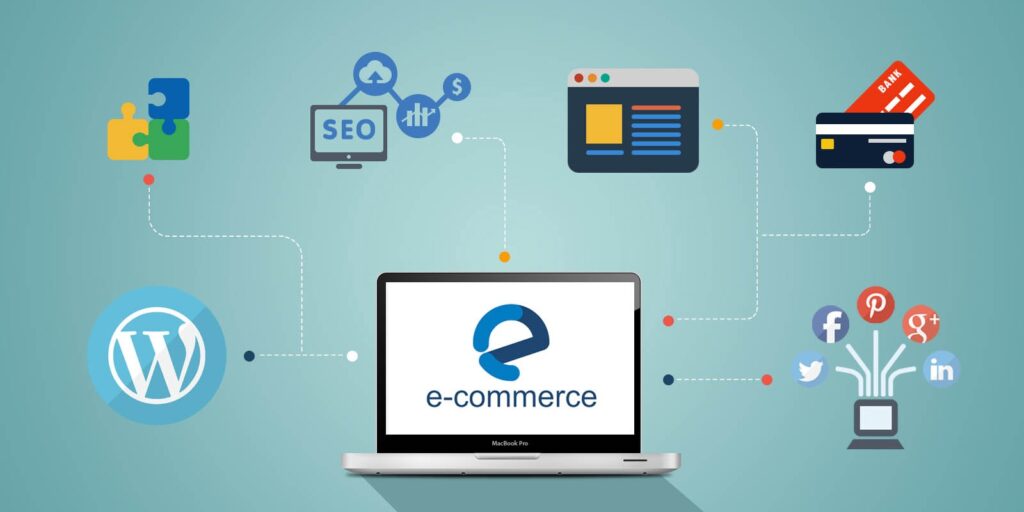
In today’s fast-paced digital economy, simply having an eCommerce website isn’t enough. With competition just a click away, your website must not only attract visitors but convert them into loyal customers. In this blog, I’ll share exactly how I build high-converting eCommerce websites that drive sales, reduce bounce rates, and keep customers coming back.
What makes this post different? It’s based on hands-on experience, real client projects, and deep research—not just generic tips you’ve seen everywhere else.
Speed: A delay of just 1 second in page load time can reduce conversions by 7% (source).
Mobile Optimization: Over 60% of eCommerce traffic comes from mobile devices.
Trust Elements: SSL certificates, clear return policies, and genuine reviews boost credibility.
User Experience (UX): Smooth navigation and intuitive design help users find what they need fast.
Building high-converting eCommerce sites starts with these pillars in mind.
I never jump into design right away. Here’s what I do first:
Audience Research: I define buyer personas to understand demographics, pain points, and buying behaviors.
Competitor Analysis: Tools like SimilarWeb and Ahrefs help me study what’s working for competitors.
Platform Selection: I usually go with WordPress + WooCommerce for flexibility or Shopify for ease of use.
“Strategy without research is like shooting arrows in the dark.”
You have 3 seconds to convince visitors to stay. Here’s how to nail that first impression:
Hero Section: Use contrasting colors and a clear value proposition. Example: *“Organic Skincare, Lab-Tested & Loved by 500K+ Customers.”*
Navigation: Limit menu items to 5-7 categories. For a furniture client, simplifying navigation increased time-on-site by 40%.
Mobile-First, Always
With 54% of eCommerce traffic coming from mobile (Smart Insights), a responsive design isn’t optional.
Before touching a line of code, I map out the website layout using Figma. This helps me:
Visualize the structure
Plan the user flow
Collaborate with clients in real-time
Wireframes ensure we’re solving the right problems before building the actual site.
A few tools I rely on to make the build process smoother:
| Tool | Purpose |
|---|---|
| Elementor Pro | Drag-and-drop page building |
| WooCommerce | Product and cart management |
| WP Rocket | Speed optimization |
| Yoast SEO | On-page SEO |
| UpdraftPlus | Site backups |
| Stripe / PayPal | Secure payments |

Clutter kills conversion. I prioritize whitespace, clear CTAs, and consistent branding.
More than 50% of users shop from mobile, so responsive design is non-negotiable.
I use Canva or Photopea for quick edits
Zoom effects and multiple image angles enhance trust
A beautiful website means nothing if no one finds it. Here’s how I optimize:
Focus keywords in titles, meta descriptions, URLs
Structured data for products
Internal linking for blog and category pages
Lazy loading
Minifying CSS/JS
CDN integration
I use TinyPNG or ShortPixel to compress images without losing quality
Offer discounts to users about to leave
Helps answer objections in real-time
Collect emails via popups and offer guides or coupons
Adding user-generated content like Instagram photos builds trust
Reduce friction by minimizing form fields
Enable guest checkout
I don’t stop after launching the site. Here’s my ongoing process:
Google Analytics: Tracks conversions, bounce rate, time on site
Hotjar: Heatmaps to understand where users click
A/B Testing: Test headlines, product layouts, and button colors
“eCommerce is not a set-it-and-forget-it game.”
In the end, high-converting eCommerce websites are built with purpose, not just pixels. My process is a blend of deep research, user-focused design, and ongoing optimization. Whether you’re a solo founder or running a growing brand, these principles can dramatically improve your online sales.
If you’re planning to build or revamp your eCommerce site, start by asking: Is your website designed to convert—or just to exist?
Feel free to contact me for a custom strategy session or check out my portfolio for real-world examples. Let’s build something powerful together.
💬 Drop your questions or thoughts in the comments—I’d love to hear from you!

Crafting unique, memorable websites that perfectly represent your brand identity, combining creativity, precision, & innovation to make your business stand out.